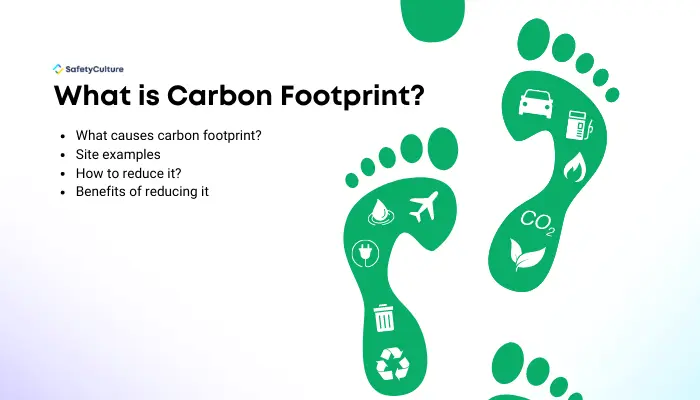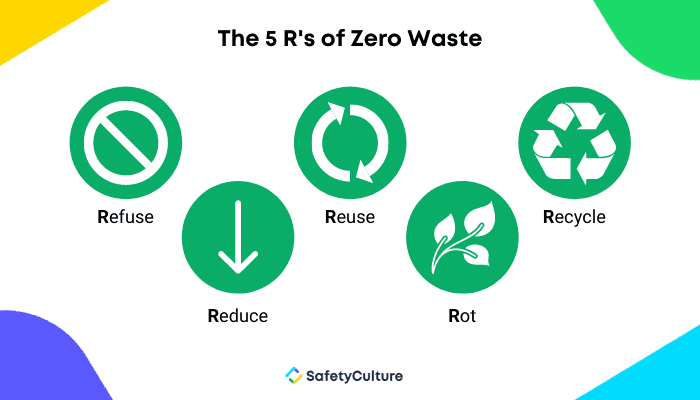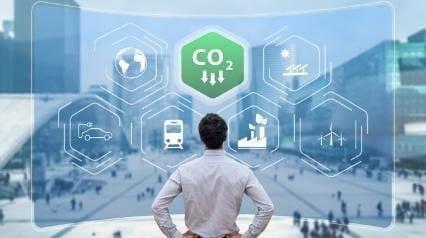Carbon Emissions in the Asia-Pacific Region
Carbon dioxide (CO2) concentrations of greenhouse gases have been on a steady rise since the industrial revolution. The increased burning of fossil fuel—as well as deforestation and other human activities—has led to a significant increase in atmospheric CO2 levels during the last few decades. Climate change is primarily caused by carbon footprint.
Asia is now the largest producer of carbon footprint, accounting for 53% of global emissions. The Asia-Pacific region emitted 16.75 billion metric tons of carbon dioxide in 2020 and this was higher than the sum of all other regions’ emissions that year, surpassing both North America and Europe—the biggest contributors to carbon emissions since the 1800s.
According to Our World in Data, one country in Asia is currently the world’s largest emitter, producing approximately 10 billion tons of carbon dioxide annually. It accounts for nearly 60% of Asia-Pacific CO2 emissions and 31% of global CO2 emissions.
What is Carbon Footprint?

The trace of greenhouse gases produced by human activities is known as carbon footprint. This environmental indicator measures emissions of substances including methane (CH4), nitrogen oxide (N2O), hydrofluorocarbons (HFCs), perfluorocarbons (PFCs), sulphur hexafluoride (SF6) and, above all, the most common and major contributor to global warming: Carbon dioxide (CO2).
Personal Carbon Footprint
Your personal carbon footprint is the trace you leave behind when you travel, consume, eat, and use resources such as energy. The majority of an individual’s carbon footprint is typically accounted for by transportation, housing, and food:
- How many miles you travel by vehicle, bus, train, or plane
- Your home’s energy consumption
- How much money you spend on shopping
- Your diet’s composition
Each time you drive, charge your phone, turn on the television, or operate the washing machine, among dozens of other daily actions, you leave a trail of gases in your wake that build in the atmosphere and contribute to global warming.
Environmental NGO The Nature Conservancy estimates that each person on the planet produces an average of almost four tons of CO2 every year, while in countries like the United States, this amount is over four times the global average per person per year.
The Carbon Footprint Of Companies
Businesses, like humans, emit greenhouse gases during manufacturing, transportation, and energy usage. The corporate footprint quantifies all of a company’s greenhouse gas emissions and their volume, regardless of whether they are direct and controllable or not.
Direct GHG emissions originate at the area where a product is manufactured or a service is provided. For industry, one example would be the emissions involved with on-site fuel combustion. While controllable emissions are those that are connected with human activities such as transportation. These emissions accelerate climate change.
Decarbonization
The term “decarbonization” literally means “carbon reduction.” That is, the transition to an economic system that sustainably cuts and compensates for carbon dioxide (CO2) emissions. Carbon dioxide reduction is important to meet global temperature standards set by the Paris Climate Agreement and the UK government.
Paris Climate Agreement
Efforts made to decarbonise have been put in place by various countries, with more than 190 parties having submitted plans to reduce carbon emissions by 2030. The Paris Agreement on Climate Change was adopted on December 12, 2015 and entered into force on November 4, 2016.
This global agreement intends to keep global temperature increases below 2° C throughout this generation, with the additional goal of limiting them to 1.5° C over pre-industrial levels. Changes made include France planning to end the sale of gasoline and diesel vehicles by 2040 in a bid to become carbon neutral by 2050.
Net Zero
Along with the prioritisation of decarbonisation, carbon neutrality targets are being established by an increasing number of governments, regions, organizations, and businesses. The UK is the first major economy to set a goal of being net zero by 2050.
Becoming net zero refers to balancing negative emissions by removing emissions from the atmosphere to achieve carbon neutrality. According to the United Nations (UN), this is achievable as long as there is widespread adoption of carbon reduction strategies and drastic change
Countries seeking to accelerate the transition to carbon neutrality can invest in the use of renewable energy sources like wind power, solar power, and biomass, retrofitting buildings, upgrading the electricity grid, facilitating electric cars, and incentivizing research.
Calculate your Carbon Footprint
There are free tools available online to calculate your personal carbon footprint in just a few minutes. You can use tools like Berkeley’s Cool Climate calculator and Carbon Footprint Calculator to help you figure out your impact and see how it compares to others in the community.
Knowing the carbon footprint of an activity, which is measured in tons of CO2 emissions, is important when it comes to taking measures and launching initiatives to reduce it to the lowest possible level.
Ways to Reduce Carbon Footprint
Reducing carbon footprint in solving climate change requires action by society – including individuals, companies, industries, states, and governments. We’ll take a look at the two areas wherein individuals can take action even in simple ways — reducing our personal carbon footprints and reducing the carbon footprint of companies.
Reduce Your Personal Carbon Footprint
The Nature Conservancy says that we all need to reduce our carbon footprints to less than two tons per year by 2050. The experts say that this is the best way to ensure that temperatures stop rising.
Shutting off your computer when not in use would reduce the machine’s CO2 emissions 83%, to just 63 kg a year. Drying clothes on a line instead of using dryers reduces the CO2 created by your laundry up to 90%. Bringing your own reusable shopping bags also helps limit excessive amounts of plastic wrapping. These are all simple ways a person can reduce his carbon footprint. Below are ways you can create a meaningful impact to reduce yours:
1. Practice the 5 R’s of Zero Waste
The Zero Waste International Alliance defines Zero Waste as “conservation of all resources by means of responsible production, consumption, reuse, and recovery of products, packaging, and materials without burning and with no discharges to land, water, or air that threaten the environment or human health.”

REFUSE: Say no to single-use plastics and paper items in favor of reusables.
REDUCE: Minimize your purchases, focusing on what you truly need.
REUSE: Always try to keep an item out of the landfill by keeping it in good condition, repairing it, or upcycling it.
ROT: Create a compost system for food scraps or locate a food scrap drop-off location near your home (such as a farmers market or community garden).
RECYCLE: By understanding your state’s recycling rules, properly recycle any plastic, paper, glass, or metal that you cannot refuse, reduce, or reuse.
2. Go Plastic-free
The production process of plastic is a leading cause of carbon emissions contributing to global warming. You can apply the 5 R’s of zero waste to reduce your plastic use and eventually become plastic-free.
Making simple changes could drastically reduce the amount of plastic pollution we produce. You can support and join different global movements like Plastic Free July.
3. Eat Less Meat, More Plant-based Diet
CO2 emissions (carbon footprint) generated by our personal activities are mostly determined by the type and quality of nourishment we consume. By substituting plant-based meals for beef, pork, chicken, or dairy products, you can significantly reduce your carbon footprint.
If you omit meat from your diet, you will prevent 820 kg of carbon dioxide from being released into the atmosphere each year. Reduced meat consumption, particularly red meat, is a healthier choice for the environment. This is because red meat production consumes a huge amount of feed, water, and land. Cows also emit methane—another harmful greenhouse gas. Your food choices can have a significant impact on the planet.
4. Enhance the Energy and Water Efficiency of Your Home
Consider investing in energy efficiency or a renewable energy system, which can result in long-term energy and financial savings. Changes made at home can definitely help the environment in dealing with climate change. Among your alternatives are the following:
-
- Solar panel installation
- Geothermal energy solutions can be integrated into your home’s heating system.
- Using more durable and higher-quality materials, such as decking made from recycled plastic and wood fibers.
- Look for the Energy Star symbol when buying new products
5. Drive Less. Fly Less.
Individuals can minimize greenhouse gas emissions by using greener modes of transportation, ranging from walking, biking, carpooling, using mass transit, or driving a best-in-class vehicle.
Aviation contributes approximately 2.5 percent of the world’s carbon dioxide (CO2) emissions. You can reduce a bigger portion of your own carbon footprint if you choose to fly less.
Digitize the way you Work
Empower your team with SafetyCulture to perform checks, train staff, report issues, and automate tasks with our digital platform.
Get Started for FreeReduce Carbon Footprint of Companies
Companies have the option to reduce their carbon footprint by improving their energy efficiency, consuming renewable energy, managing their sewage treatment processes, running campaigns to raise awareness, investing in environmental projects, and paying green taxes, among other options. But we can reduce carbon footprints at work by simply doing the following:
-
Go Paperless
By going paperless and implementing electronic document management systems, you can help reduce deforestation and pollution—freeing up more trees to undertake the work of carbon dioxide absorption and slowing down climate change.
Reduce the amount of gasoline used to transport materials and paper, as well as the amount of fuel consumed by workers to commute to and from solely for the purpose of an audit, or of signing their job contract.
-
Minimize Business Travels
Transportation sources account for 27% of US greenhouse gas emissions, including emissions created by people traveling for office-related business and commuting to and from their workplaces.
Travel is still a significant source of carbon emissions and will continue to be so, particularly as the population grows and more goods are shipped. The good news is that numerous opportunities exist to reduce our climate impact. Companies that reduce business travel lessen carbon emissions and save an estimated 4.2 billion gallons of gas per year.



